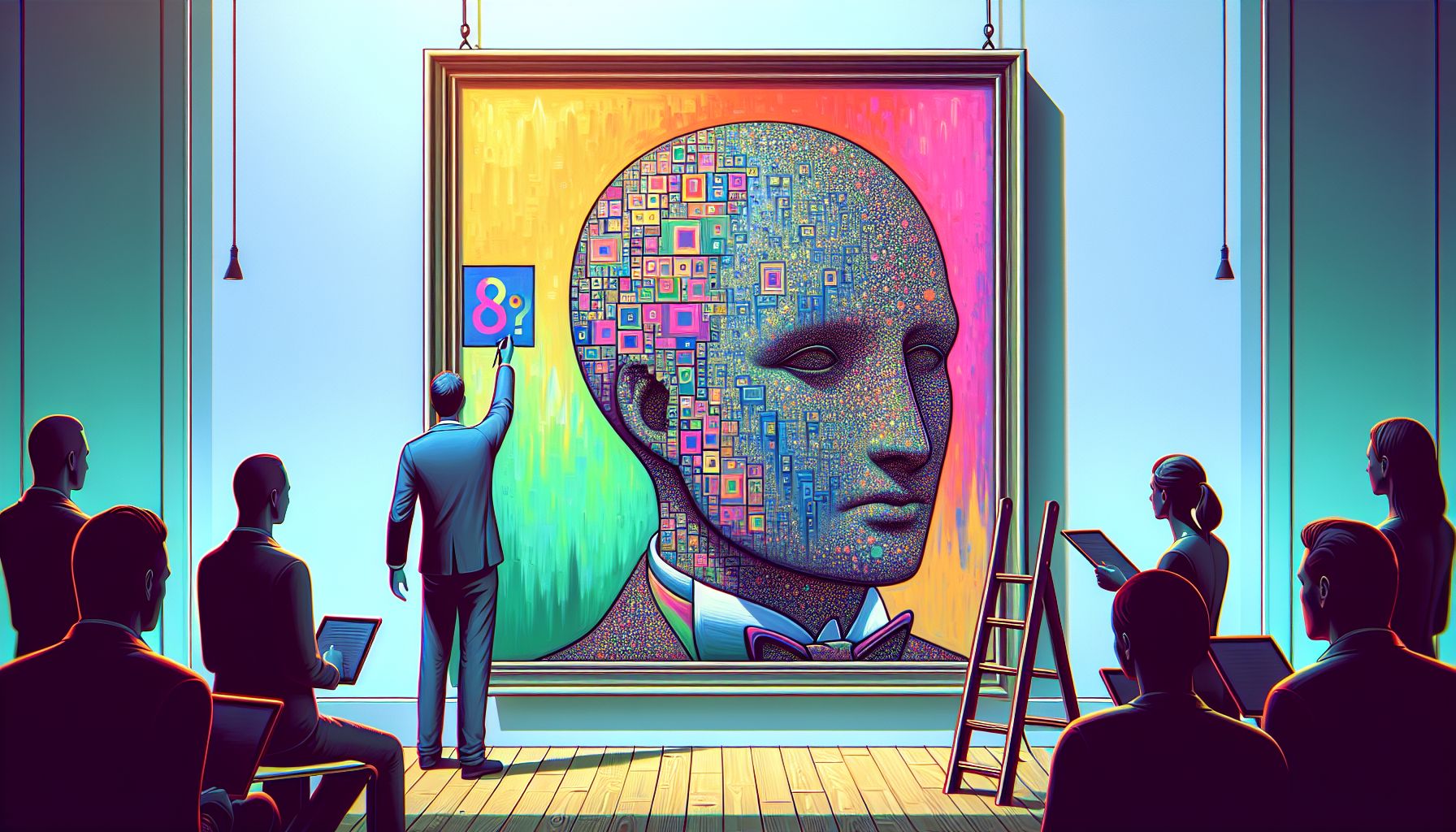AI Artist's Portrait Fetches $1 Million at Sotheby's Auction

London, Tuesday, 12 November 2024.
A portrait of Alan Turing created by Ai-Da, an AI-powered robot artist, sold for over $1 million at Sotheby’s, far exceeding initial estimates. The sale marks a significant moment in art history, sparking debate about AI’s role in creativity and its impact on the art market.
The Evolution of AI in Art
The sale of Ai-Da’s artwork, titled ‘A.I. God. Portrait of Alan Turing,’ at Sotheby’s has ignited discussions about the intersection of artificial intelligence and art. Ai-Da, designed by Aidan Meller, is the first humanoid robot artist whose work has been sold at a major auction house. This event is not merely a transaction; it represents a pivotal moment in the art world, where the boundaries between human creativity and machine-generated art are increasingly blurred[1].
Understanding Ai-Da’s Creative Process
Ai-Da’s creative process involves a combination of cameras, AI algorithms, and robotic mechanisms to produce art. The robot uses its cameras to interpret the world, feeding this data into AI systems that generate artistic responses. The robotic arm then translates these responses onto canvas, creating pieces that reflect both technological input and artistic vision. Ai-Da’s work showcases how technology can replicate and even expand traditional artistic methods, offering a new perspective on creativity and originality[2].
The Debate Over Artistic Integrity
While Ai-Da’s success at Sotheby’s has been celebrated as a breakthrough, it has also sparked controversy. Critics argue that AI art lacks the emotional depth and conceptual intention found in human-created art. Caspar de Kiefte from the Kunstenbond suggests that AI-generated art should not be classified as true art, as it often draws from existing works without original thought[3]. This viewpoint highlights the ongoing debate about the role of AI in creative fields and whether machines can truly possess artistic agency.
Ai-Da’s Impact on the Art Market
The overwhelming interest in Ai-Da’s artwork at Sotheby’s, which received 27 bids, indicates a strong market demand for AI-generated pieces. This demand reflects a broader trend in the art world, where digital and AI art are becoming increasingly popular among collectors. Michael Bouhanna, Sotheby’s vice president and head of digital art, noted that discussions with collectors revealed a keen interest in Ai-Da’s work, underscoring the growing acceptance of AI art in mainstream markets[4].
Future Prospects for AI Art
As Ai-Da’s success demonstrates, AI art is poised to become a staple in galleries and museums worldwide. Constant Brinkman of Dead End Gallery, which focuses exclusively on AI art, believes that AI works will soon become as revered as traditional masterpieces. This shift suggests that AI art could redefine how future generations perceive artistic value and creativity. As AI technology continues to advance, its role in the art world is likely to expand, challenging existing notions of art and creativity[5].

